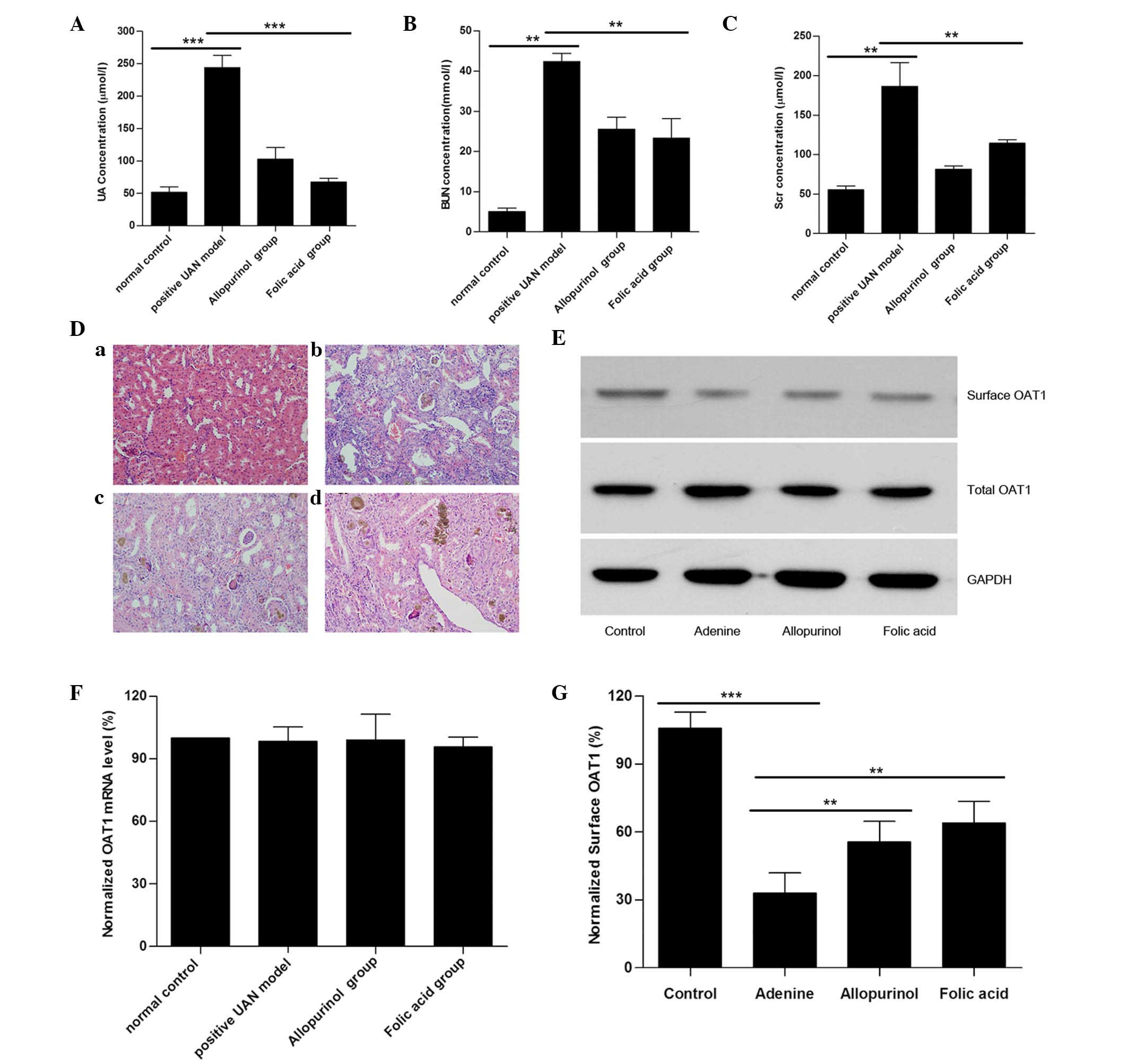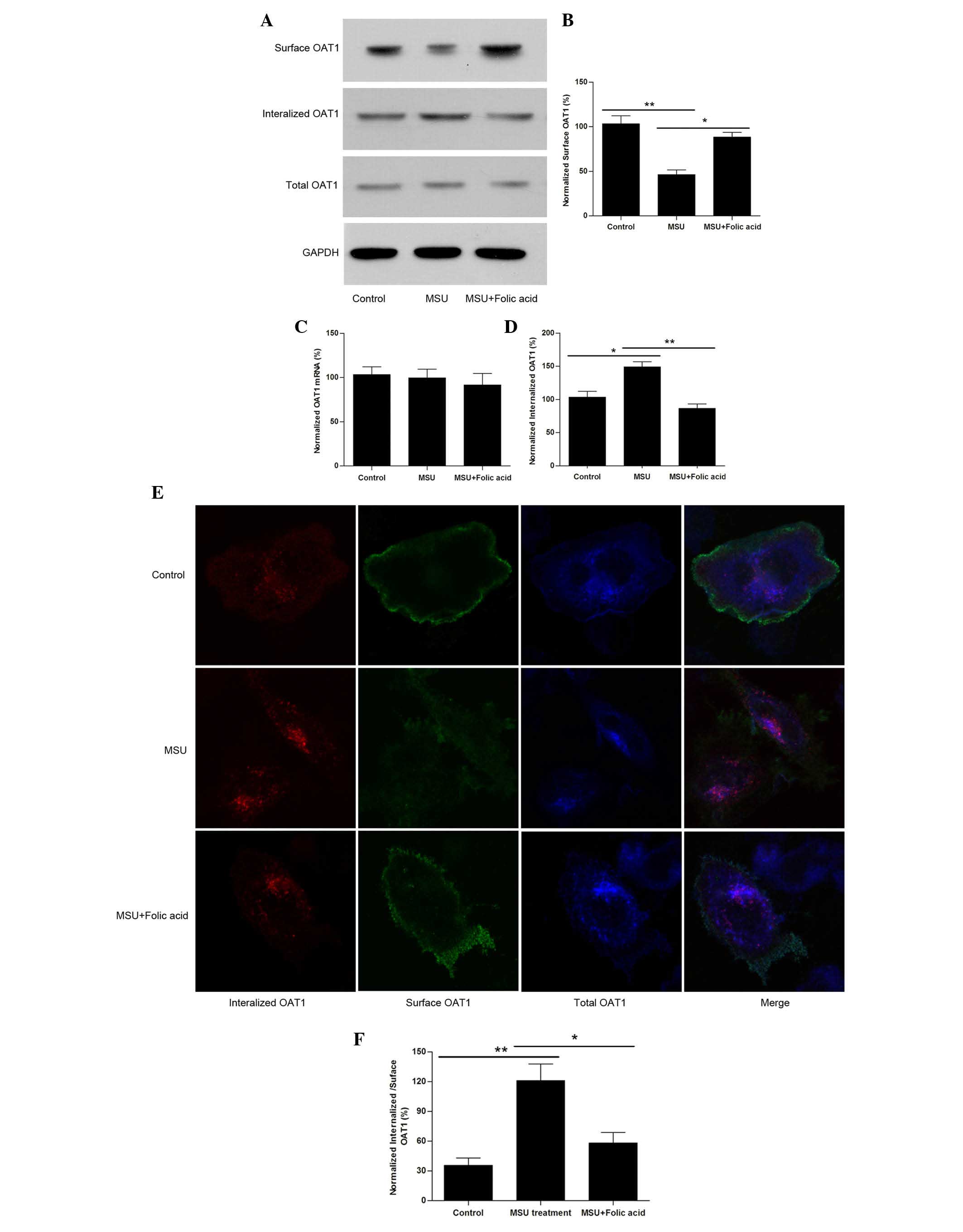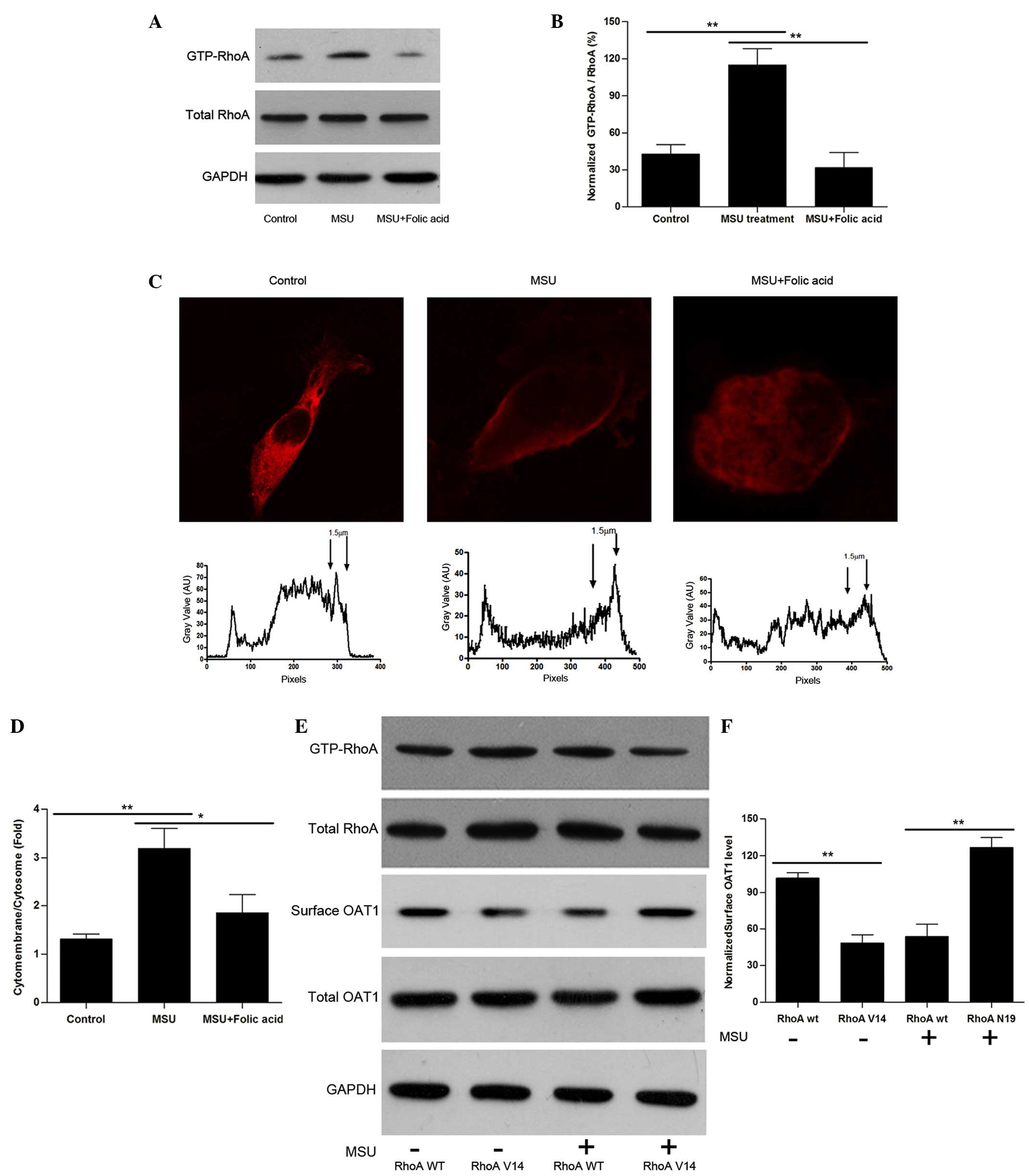|
1
|
Klemp P, Stansfield SA, Castle B and
Robertson MC: Gout is on the increase in New Zealand. Ann Rheum
Dis. 56:22–26. 1997. View Article : Google Scholar : PubMed/NCBI
|
|
2
|
Arromdee E, Michet CJ, Crowson CS,
O'Fallon WM and Gabriel SE: Epidemiology of gout: Is the incidence
rising? J Rheumatol. 29:2403–2406. 2002.PubMed/NCBI
|
|
3
|
Li Y, Stamler J, Xiao Z, Folsom A, Tao S
and Zhang H: Serum uric acid and its correlates in Chinese adult
populations, urban and rural, of Beijing. The PRC-USA collaborative
study in cardiovascular and cardiopulmonary epidemiology. Int J
Epidemiol. 26:288–296. 1997. View Article : Google Scholar : PubMed/NCBI
|
|
4
|
Johnson RJ, Kang DH, Feig D, Kivlighn S,
Kanellis J, Watanabe S, Tuttle KR, Rodriguez-Iturbe B,
Herrera-Acosta J and Mazzali M: Is there a pathogenetic role for
uric acid in hypertension and cardiovascular and renal disease?
Hypertension. 41:1183–1190. 2003. View Article : Google Scholar : PubMed/NCBI
|
|
5
|
Tseng CH: Independent association of uric
acid levels with peripheral arterial disease in Taiwanese patients
with Type 2 diabetes. Diabet Med. 21:724–729. 2004. View Article : Google Scholar : PubMed/NCBI
|
|
6
|
Kai H, Kaneyuki M, Shihara M, Toyama Y,
Mitsutake Y, Umei H, Kusaba K, Ueda T, Adachi H and Imaizumi T;
MAPPY Study Investigators: Reduction in morning blood pressure is a
key factor for ameliorating urinary albumin excretion in patients
with morning hypertension irrespective of treatment regimen. Circ
J. 77:1551–1557. 2013. View Article : Google Scholar : PubMed/NCBI
|
|
7
|
Sekine T, Cha SH and Endou H: The
multispecific organic anion transporter (OAT) family. Pflugers
Arch. 440:337–350. 2000. View Article : Google Scholar : PubMed/NCBI
|
|
8
|
Koepsell H: The SLC22 family with
transporters of organic cations, anions and zwitterions. Mol
Aspects Med. 34:413–435. 2013. View Article : Google Scholar : PubMed/NCBI
|
|
9
|
Sweeney DE, Vallon V, Rieg T, Wu W,
Gallegos TF and Nigam SK: Functional maturation of drug
transporters in the developing, neonatal, and postnatal kidney. Mol
Pharmacol. 80:147–154. 2011. View Article : Google Scholar : PubMed/NCBI
|
|
10
|
Ulmius M, Johansson-Persson A, Krogh M,
Olsson P and Önning G: An oat bran meal influences blood insulin
levels and related gene sets in peripheral blood mononuclear cells
of healthy subjects. Genes Nutr. 6:429–439. 2011. View Article : Google Scholar : PubMed/NCBI
|
|
11
|
Pritchard JB: Coupled transport of
p-aminohippurate by rat kidney basolateral membrane vesicles. Am J
Physiol. 255:F597–F604. 1988.PubMed/NCBI
|
|
12
|
Sweet DH, Wolff NA and Pritchard JB:
Expression cloning and characterization of ROAT1. The basolateral
organic anion transporter in rat kidney. J Biol Chem.
272:30088–30095. 1997. View Article : Google Scholar : PubMed/NCBI
|
|
13
|
Burckhardt G: Drug transport by organic
anion transporters (OATs). Pharmacol Ther. 136:106–130. 2012.
View Article : Google Scholar : PubMed/NCBI
|
|
14
|
Pavlova A, Sakurai H, Leclercq B, Beier
DR, Yu AS and Nigam SK: Developmentally regulated expression of
organic ion transporters NKT (OAT1), OCT1, NLT (OAT2), and Roct. Am
J Physiol Renal Physiol. 278:F635–F643. 2000.PubMed/NCBI
|
|
15
|
VanWert AL, Gionfriddo MR and Sweet DH:
Organic anion transporters: Discovery, pharmacology, regulation and
roles in pathophysiology. Biopharm Drug Dispos. 31:1–71. 2010.
|
|
16
|
Kim S, Lee CH, Kang CM and Kim GH: Effects
of increased uric acid intake on the abundance of urate-anion
exchanger and organic anion transporter proteins in the rat kidney.
Electrolyte Blood Press. 5:62–67. 2007. View Article : Google Scholar : PubMed/NCBI
|
|
17
|
Yarlagadda SG and Perazella MA:
Drug-induced crystal nephropathy: An update. Expert Opin Drug Saf.
7:147–158. 2008. View Article : Google Scholar : PubMed/NCBI
|
|
18
|
Wu X, Liu L, Xie H, Liao J, Zhou X, Wan J,
Yu K, Li J and Zhang Y: Tanshinone IIA prevents uric acid
nephropathy in rats through NF-κB inhibition. Planta Med.
78:866–873. 2012. View Article : Google Scholar : PubMed/NCBI
|
|
19
|
Kim YI: Will mandatory folic acid
fortification prevent or promote cancer? Am J Clin Nutr.
80:1123–1128. 2004.PubMed/NCBI
|
|
20
|
Choi SW and Mason JB: Folate status:
Effects on pathways of colorectal carcinogenesis. J Nutr. 132(Suppl
8): S2413–S2418. 2002.
|
|
21
|
Lin SY, Lee WR, Su YF, Hsu SP, Lin HC, Ho
PY, Hou TC, Chou YP, Kuo CT and Lee WS: Folic acid inhibits
endothelial cell proliferation through activating the cSrc/ERK
2/NF-κB/p53 pathway mediated by folic acid receptor. Angiogenesis.
15:671–683. 2012. View Article : Google Scholar : PubMed/NCBI
|
|
22
|
Hou TC, Lin JJ, Wen HC, Chen LC, Hsu SP
and Lee WS: Folic acid inhibits endothelial cell migration through
inhibiting the RhoA activity mediated by activating the folic acid
receptor/cSrc/p190RhoGAP-signaling pathway. Biochem Pharmacol.
85:376–384. 2013. View Article : Google Scholar
|
|
23
|
Fromme T and Klingenspor M: Rapid single
step subcloning procedure by combined action of type II and type
IIs endonucleases with ligase. J Biol Eng. 1:1–3. 2007. View Article : Google Scholar
|
|
24
|
Shi Y, Evans JE and Rock KL: Molecular
identification of a danger signal that alerts the immune system to
dying cells. Nature. 425:516–521. 2003. View Article : Google Scholar : PubMed/NCBI
|
|
25
|
Etienne-Manneville S and Hall A: Rho
GTPases in cell biology. Nature. 420:629–635. 2002. View Article : Google Scholar : PubMed/NCBI
|












